Cui Bono
Graduate thesis for my Master’s at the Interactive Telecommunications Program (ITP)
Tisch School of the Arts, NYU, 2022
Role: Concept, design, fabrication, LED circuitry, TouchDesigner interaction.
Photography by Gareth Smit & Illuminaion NYC.

Cui Bono is a research project and interactive light installation exploring cultural production through the spatial relations of cultural organisms and ecosystems. Using a model of immersive LED panels that react to participants’ various movements – in some ways how much space they take up, and in other ways how much energy or ‘cultural activity’ they provide – Cui Bono gives users the opportunity to visualise and spatially experience an organism (the user) entering an ecosystem (the installation).
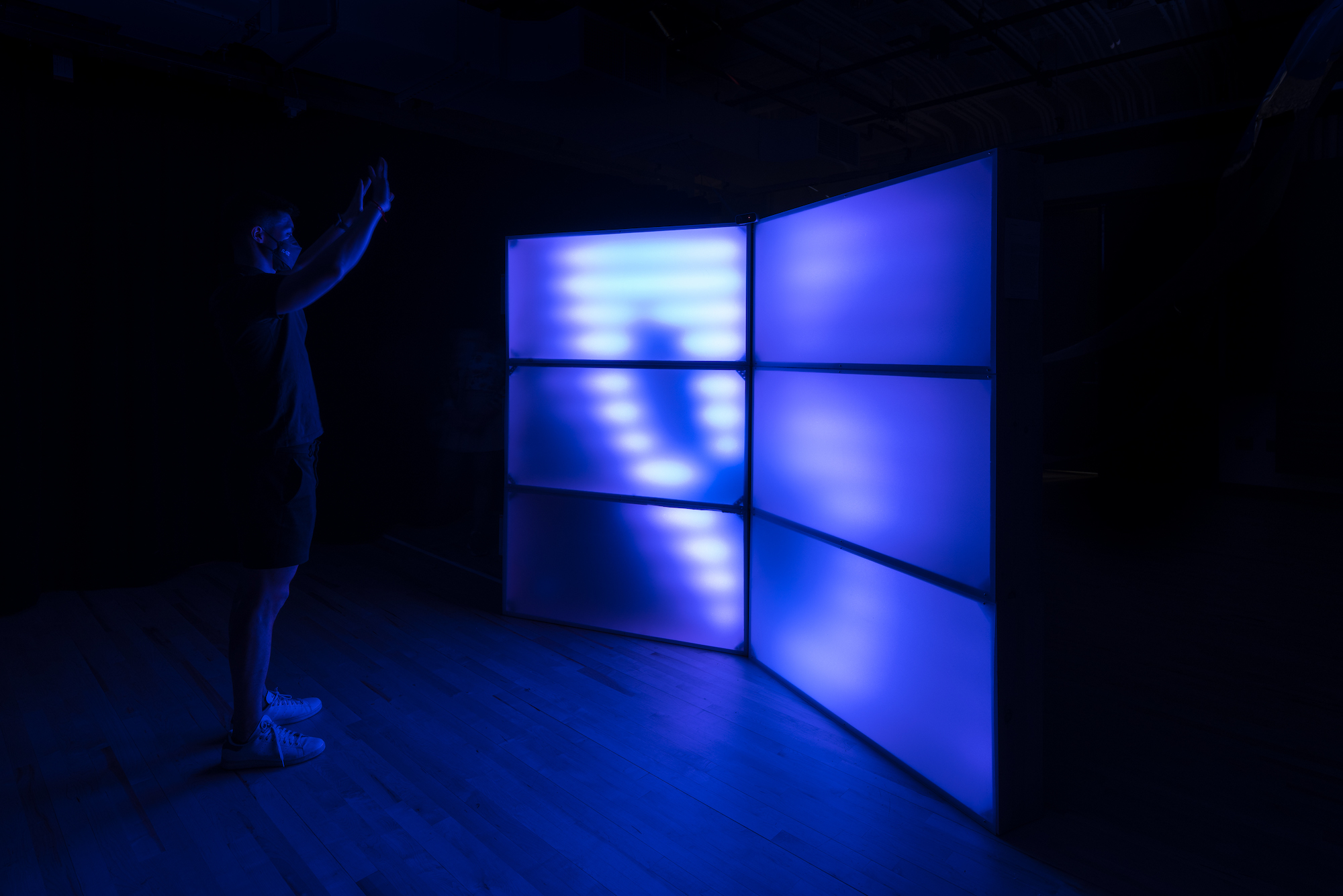

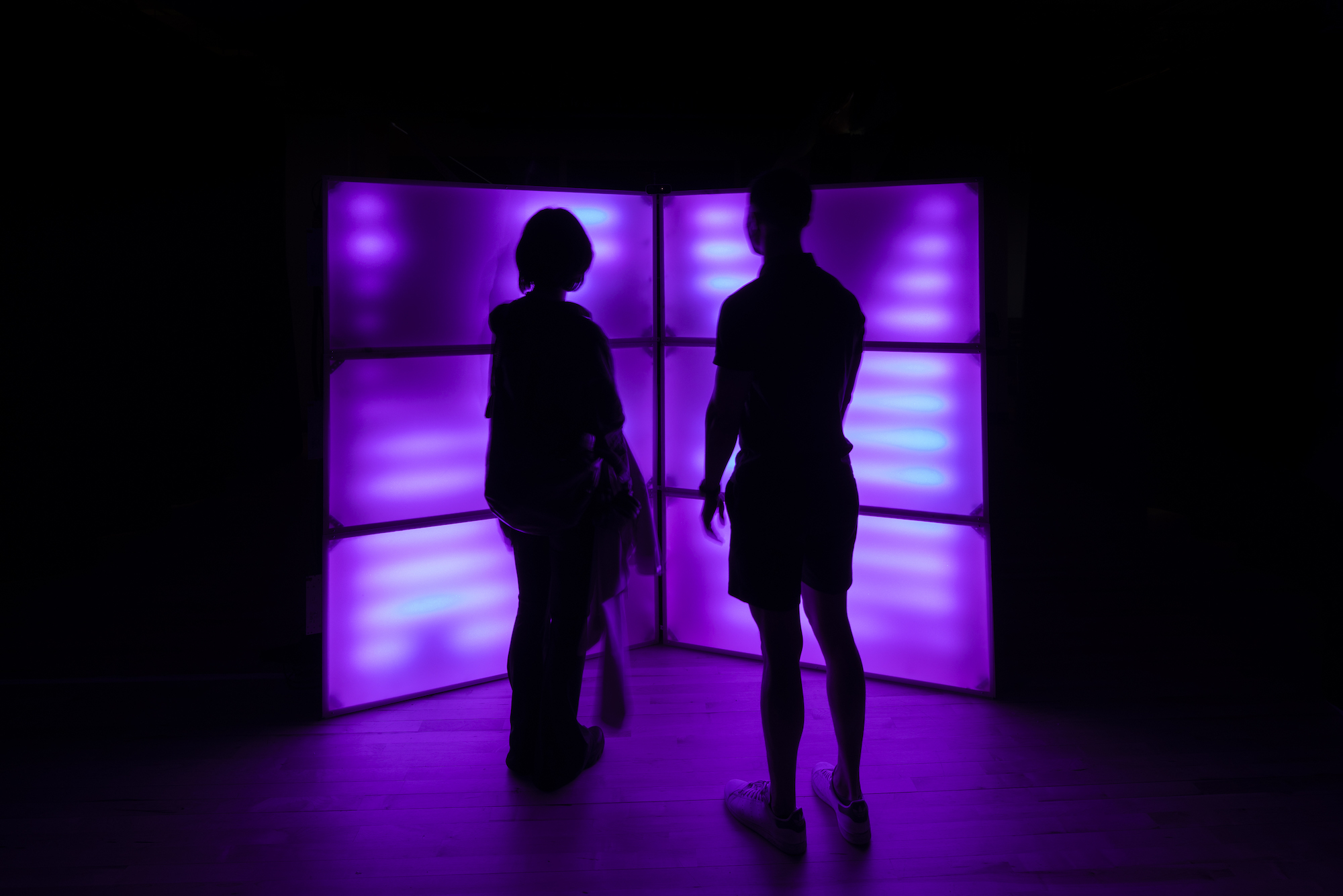
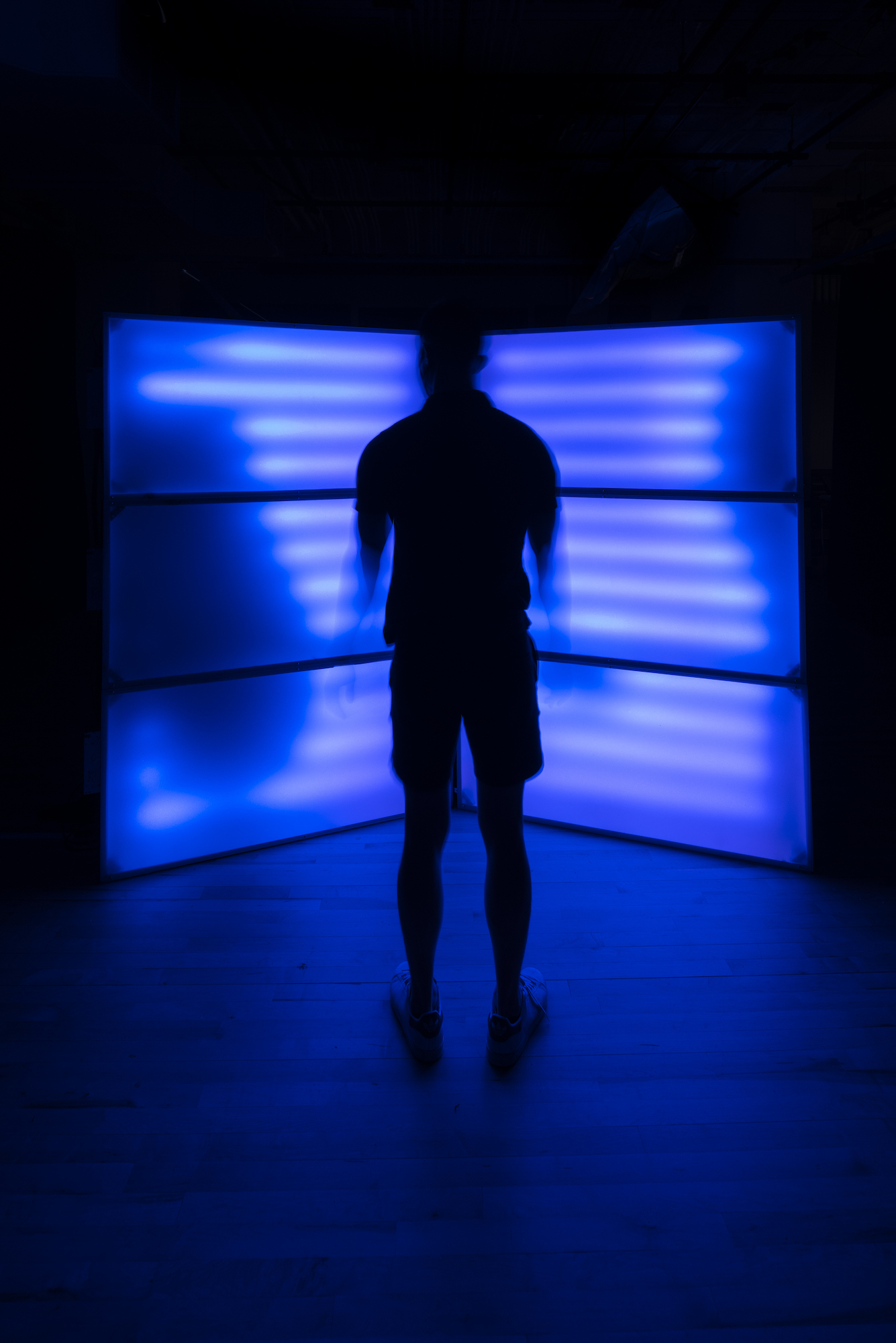

Cui Bono is a research project and interactive light installation exploring cultural production through the spatial relations of cultural organisms and ecosystems.
This is a project about the form of culture, not the content. I’m interested in the organic nature of cultural relations and progression. My background is in design and curating and I have always been interested in systems thinking. Since being at ITP I’ve been interested in how all of these disciplines interact and how technology also contributes to them. When elements interact in a system, this can lead to power: When there are parameters in place, this can lead to gamification – playing the system, as they say. Structures can be built on or destroyed, just as much as rules can only be broken once they're made.
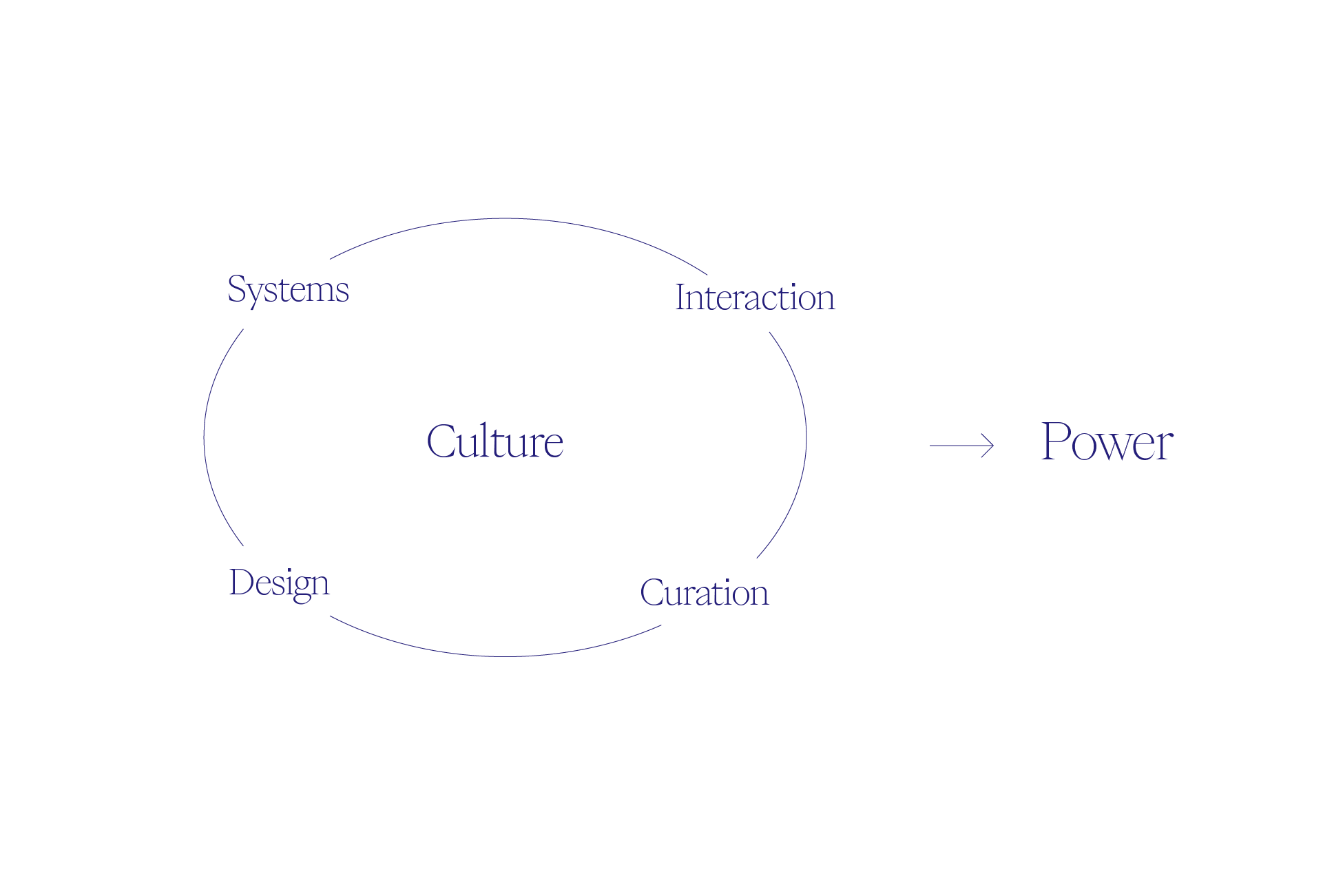
In 2015 at the University of Cape Town a series of students organized protests for the removal of a statue of Cecil John Rhodes, known slave owner and colonialist. The protest of course weren’t only about the statue – they were about rejecting the symbol and legacy of the statue. This led to widespread grassroots education and waves of protests not only on decoloniality as a whole, but also on educating young people on micro-aggressions, cultural misappropriation, and implicit racism. All of which is quite common knowledge these days, but this was about seven or eight years ago. These notions of positionality and social influence led me to thinking many years down the line about how we function as cultural organisms and ecosystems: how we affect one another, how we relate to our environment, and vice-versa.
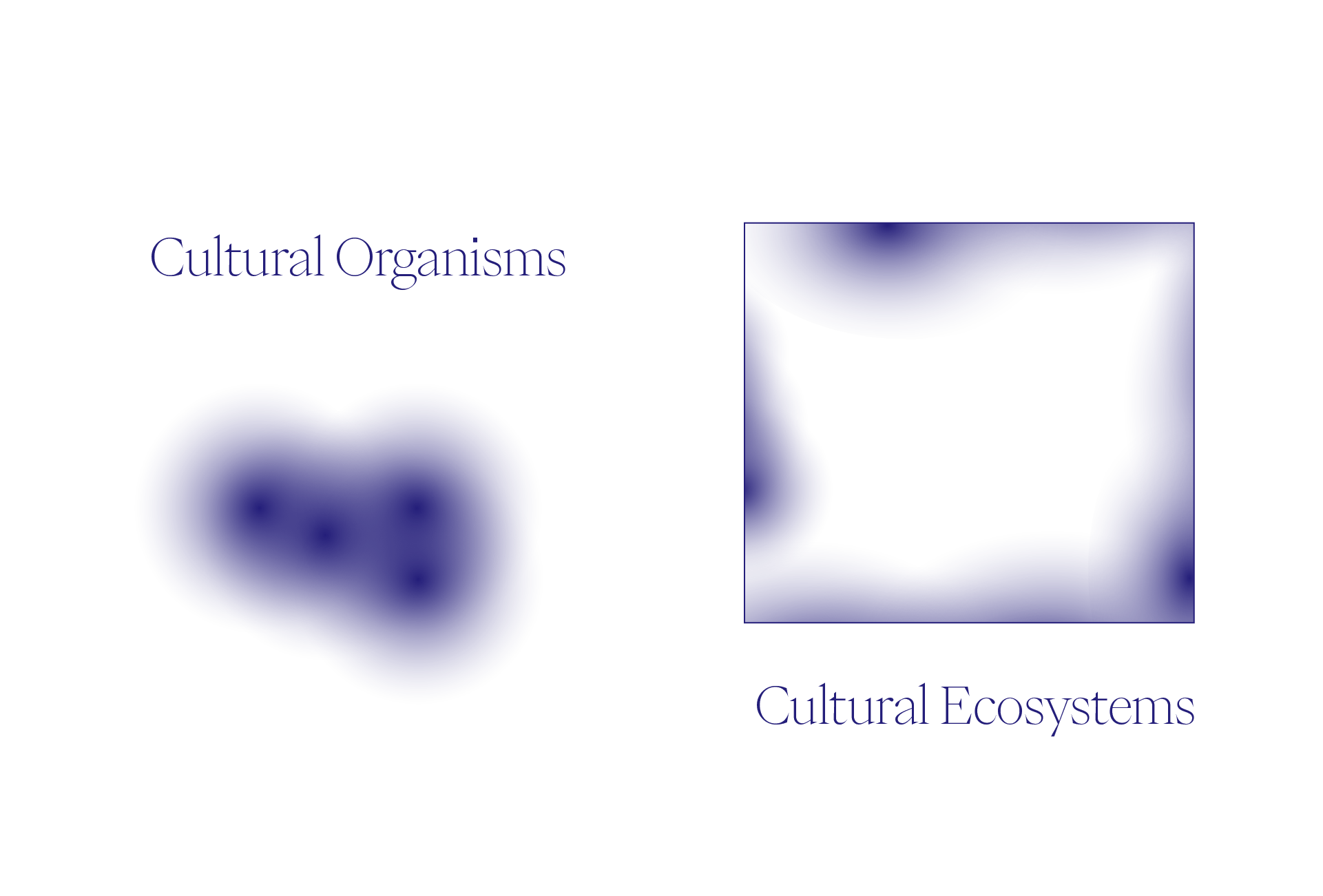
For me a cultural organism is any object or symbol of cultural value. It can operate at different scales; something as simple as a pair of shoes or a brand or more relatable like a person. Or something bigger like a company even the nation state or government. Ecosystems also have different categories: something as casual as just other organisms collectively creating their own ecosystem. That would be seen as something like any kind of subculture or ‘scene’. Some ecosystems have some more predetermined boundaries or parameters and could be seen as heterotopias. These are environments designed for specific purposes such as universities or prisons or retirement homes.
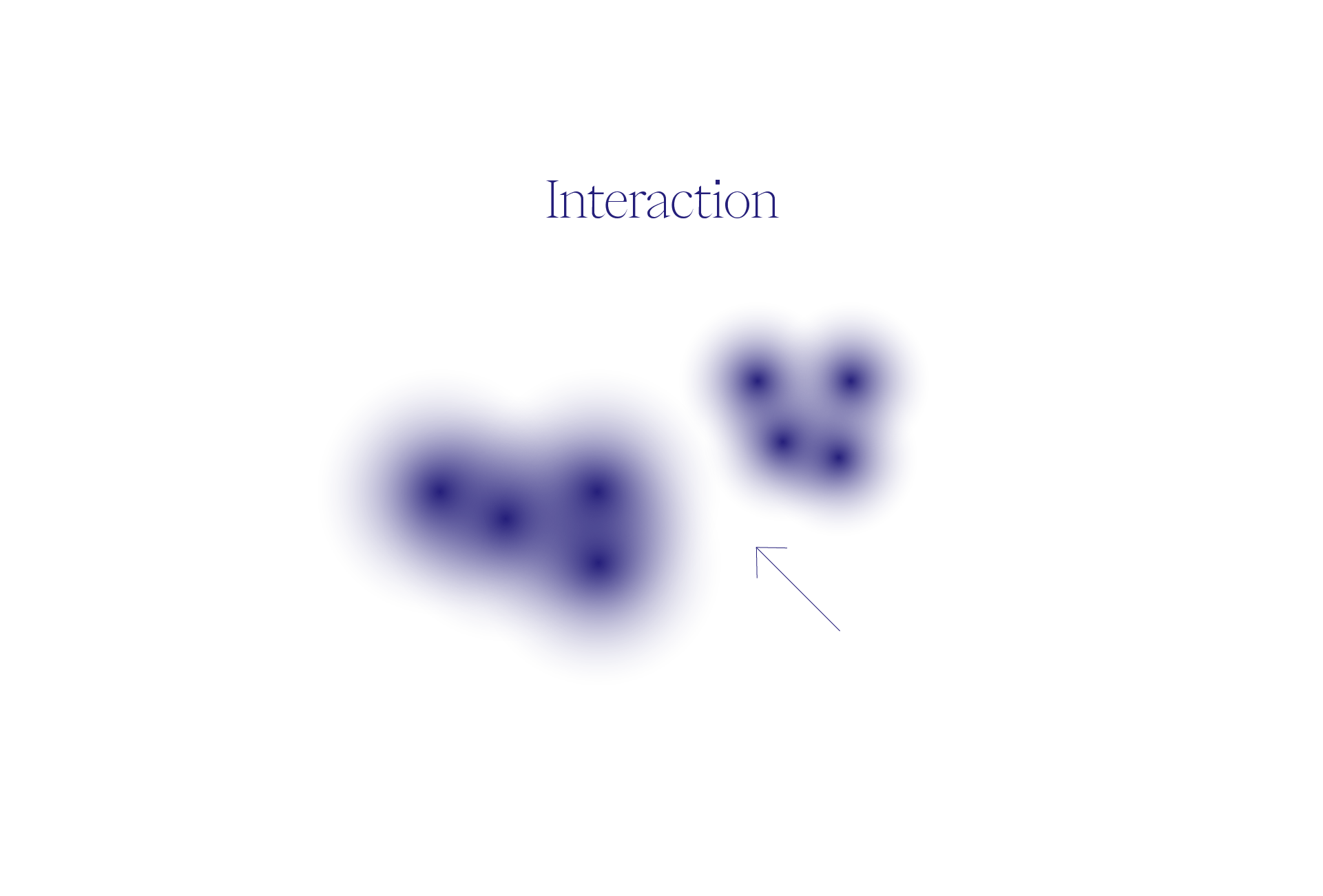
But I'm particularly interested in this little thing here, the interaction between these organisms. Hito Steyerl has written about the difference between cultural organisms and how culture is produced when there is a difference between these two elements interacting with one another. If they're the same or if you're in a state of equilibrium already, not much culture is going to be produced. It's in the tension that there is some kind of a spark, and sometimes that spark can actually be a clash or even over time develop into its own form of ritualized violence.
You'll also notice that the aesthetics I use with these organisms are incredibly porous. I'm very interested in the blurry dynamics and soft edges because all of these things function on a gradient scale with different ways of blending and overlapping.
So Cui Bono – “For whose benefit? Who stands to gain?” The title phrase Cui Bono has largely been used by researchers in referencing cultural evolution and determining incentives. Cui Bono is also a legal term for determining who of the accused are more likely to have committed the crime in question: Perhaps those who have benefited the most? Considering who’s benefited we can look at the degrees of interaction between two cultural organisms. As power and imbalance increase we move down the scale from exposure and consumption all the way down to the more ominous misappropriation and exploitation. This is a dynamic that is only capable of being produced within the cultural ecosystem of capitalism.
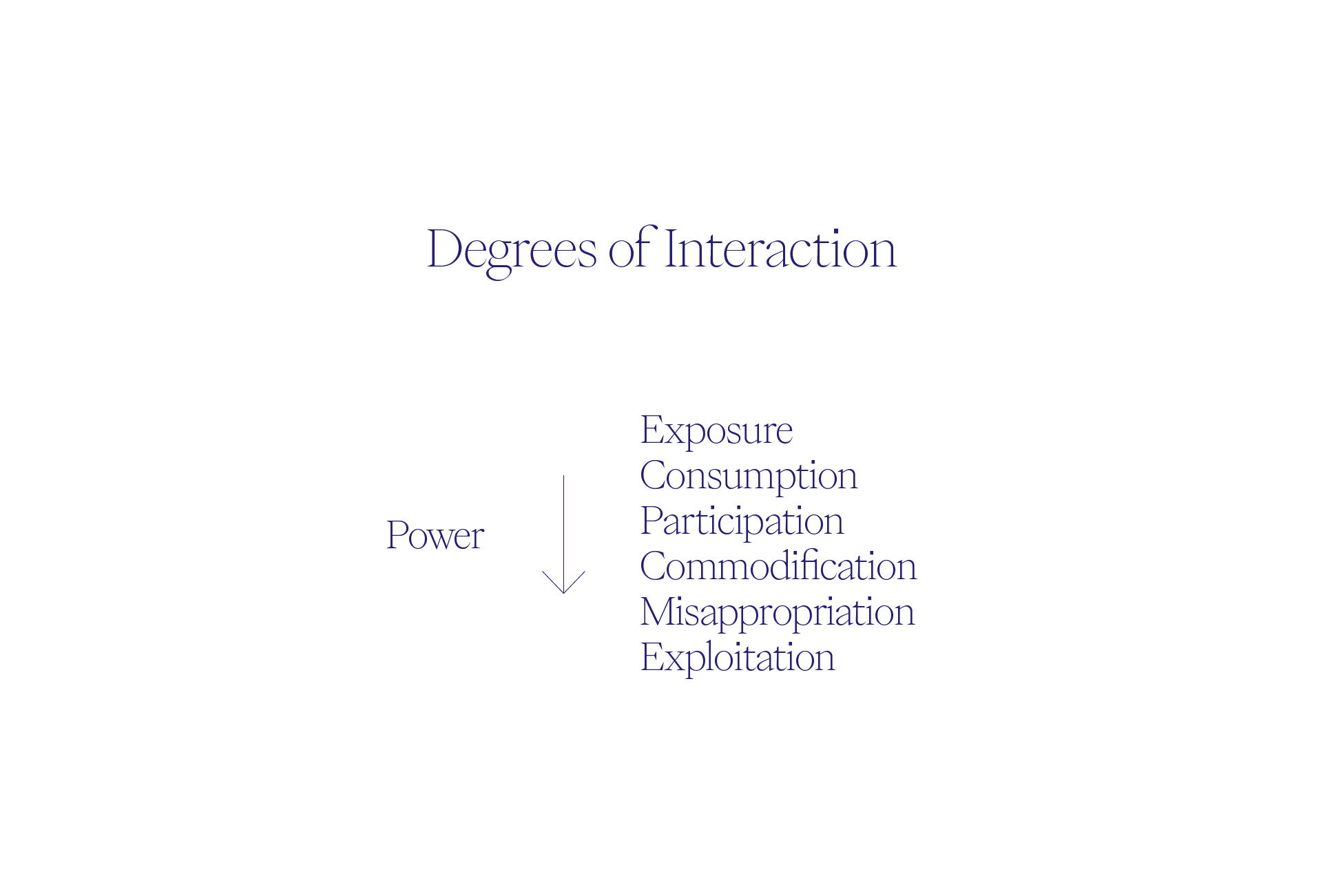
Considering the cultural ecosystem of capitalism we can also look at the lifespan of an organism. This is can evidently be seen with something like pop culture trends. From when it starts it's something that's really unconventional and seen as weird or experimental, and then it becomes really cool because it's ‘edgy’. Thereafter it gains traction and becomes more cool, more popular, becomes a convention; becomes a commodity and then sort of eventually becomes obsolete or reaches equilibrium and is something that just fits into our everyday life.

So that's some insight into the research I had been doing. Beyond this theory I started exploring physicality of something that can't be touched. This is something that I've seen through the work of early light artists such as Dan Flavin or more contemporarily like James Turrell. And since being at ITP, something I've thought about a lot is the idea of sensors as technological extensions of cultural auras. And so I envisioned the Cui Bono installation:
9 polycarbonate panels
Over 2000 LEDs
720W of power
108 feet of wood
Kinect Azure Body tracking running into TouchDesigner and Madmapper
An installation which gives the user the opportunity to experience being an organism entering an ecosystem.
I designed the nine panels quite intentionally with modularity in mind so that they can adapt and be moved around or change shape in different shape or form with the LED’s power and data going in and out at both sides. This was actually put to test when three of the panels stopped working and I had to rearrange the remaining six for the Spring Show installation and actually proved to be very effective.
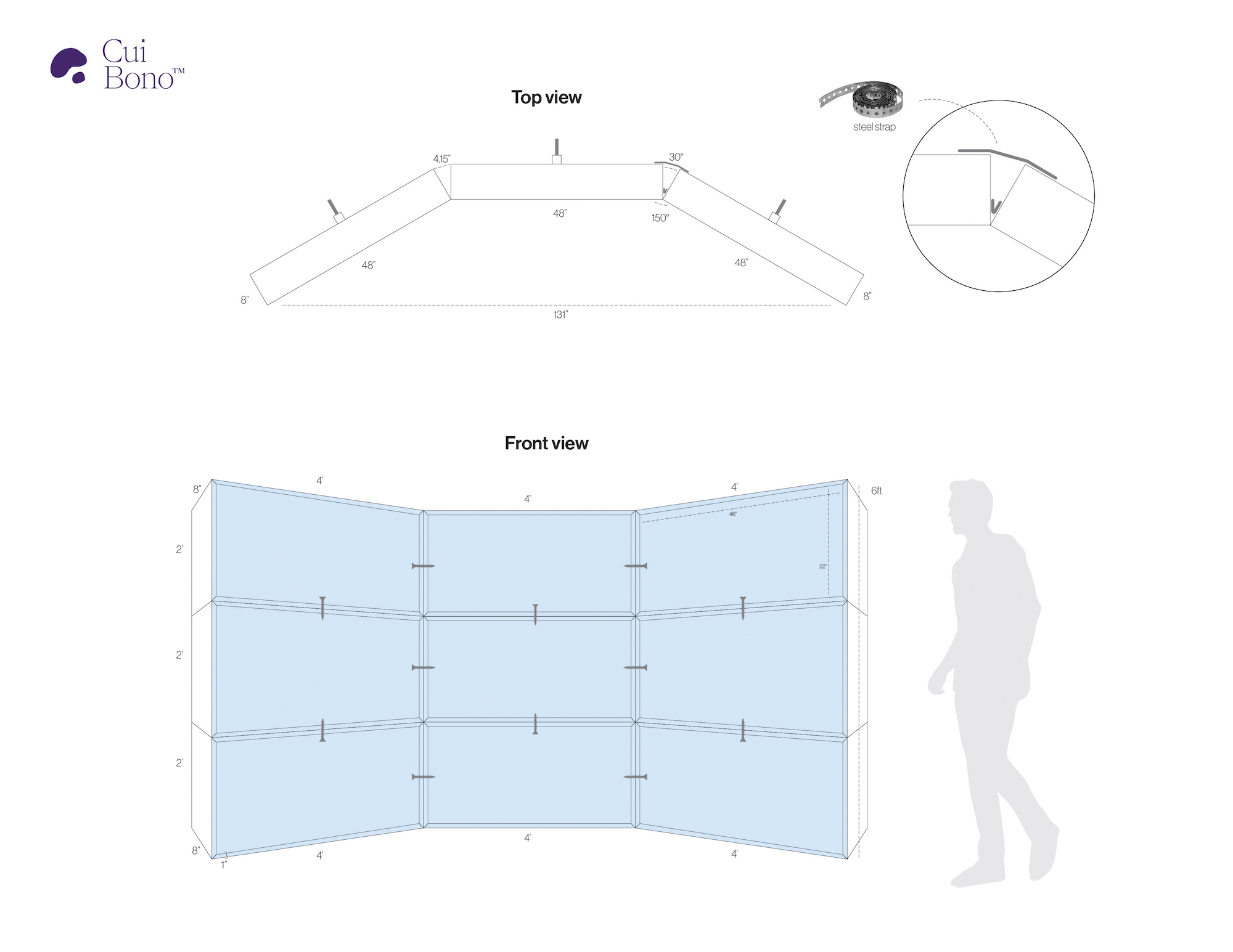
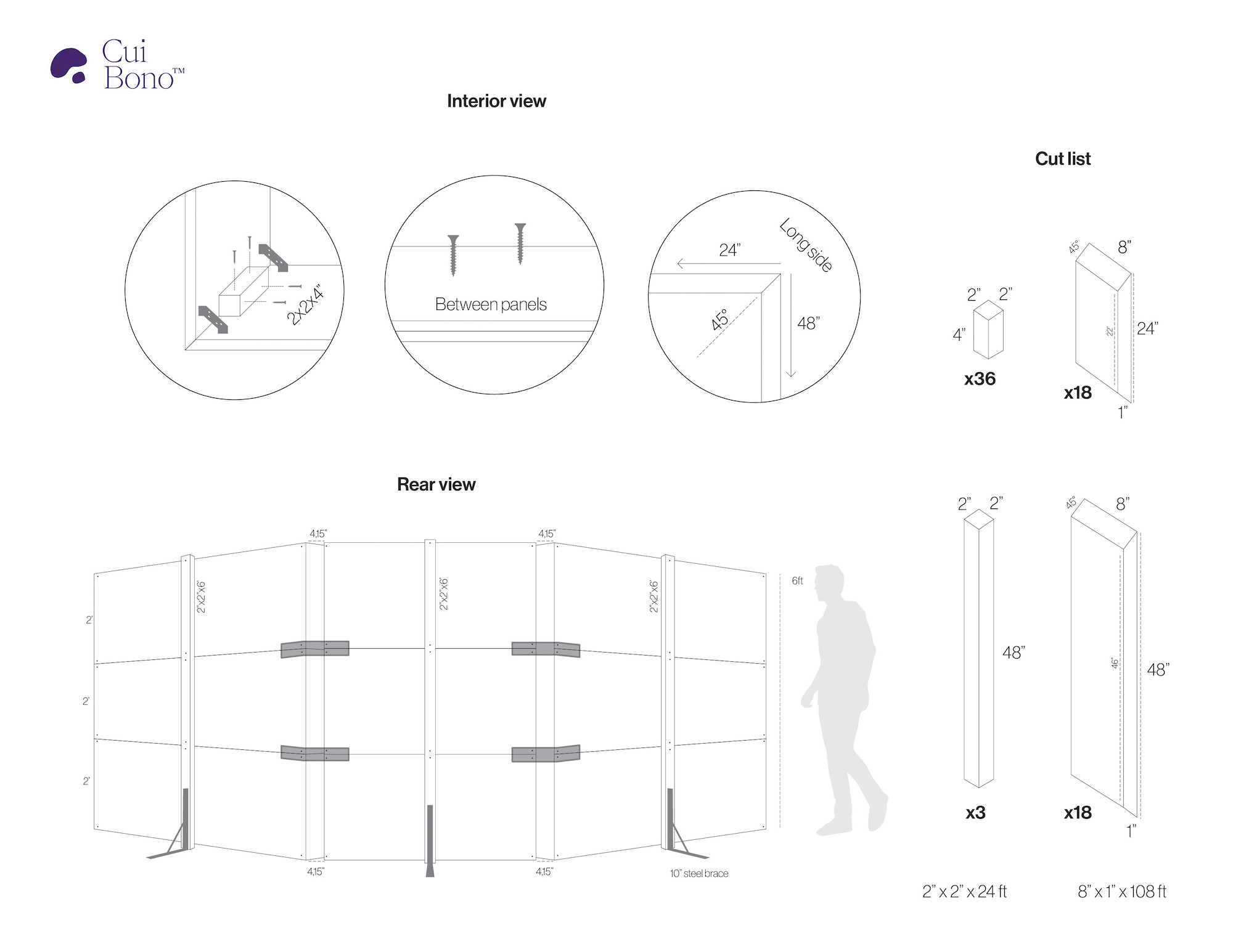
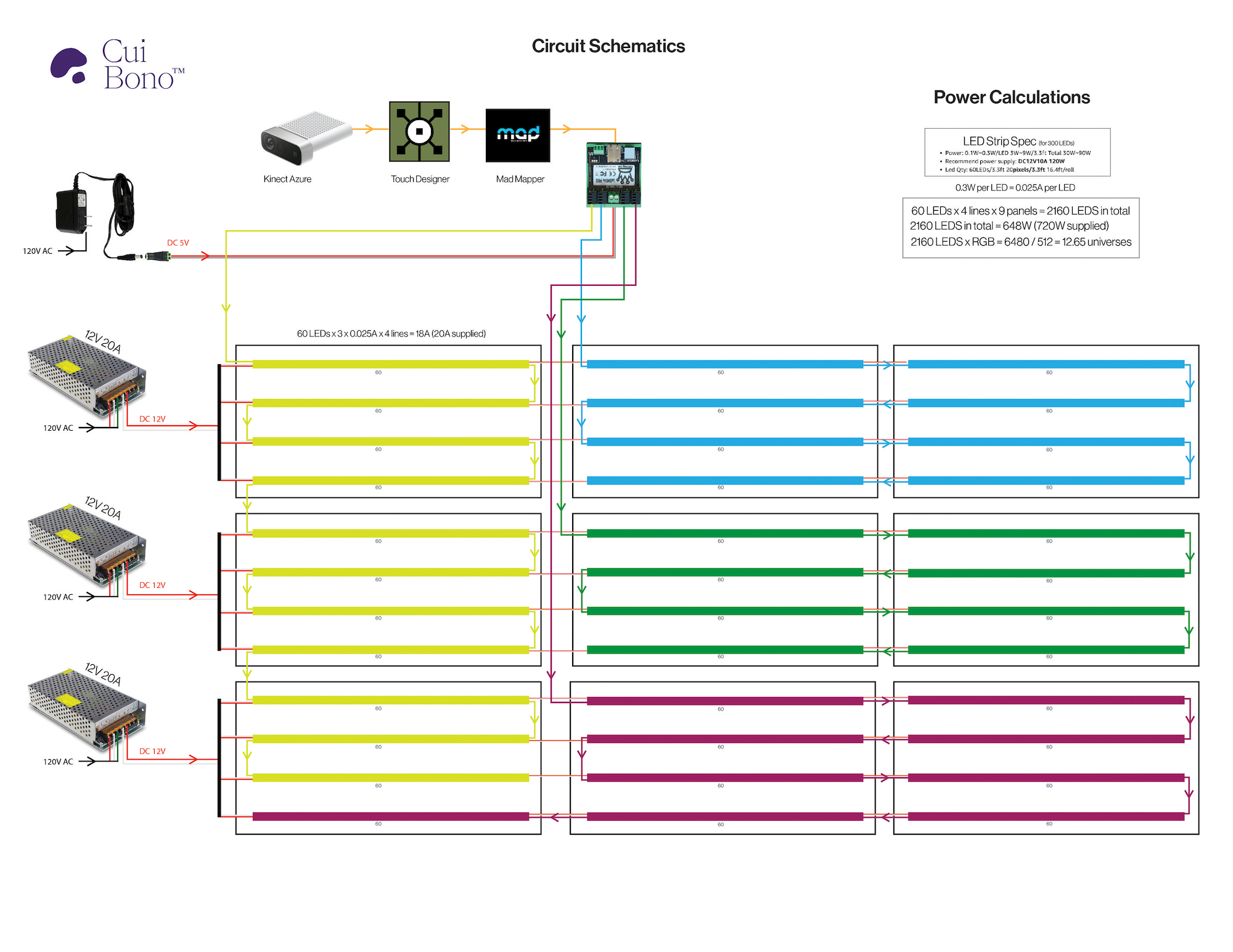
Fabrication:
Early mock-ups, done in Blender:
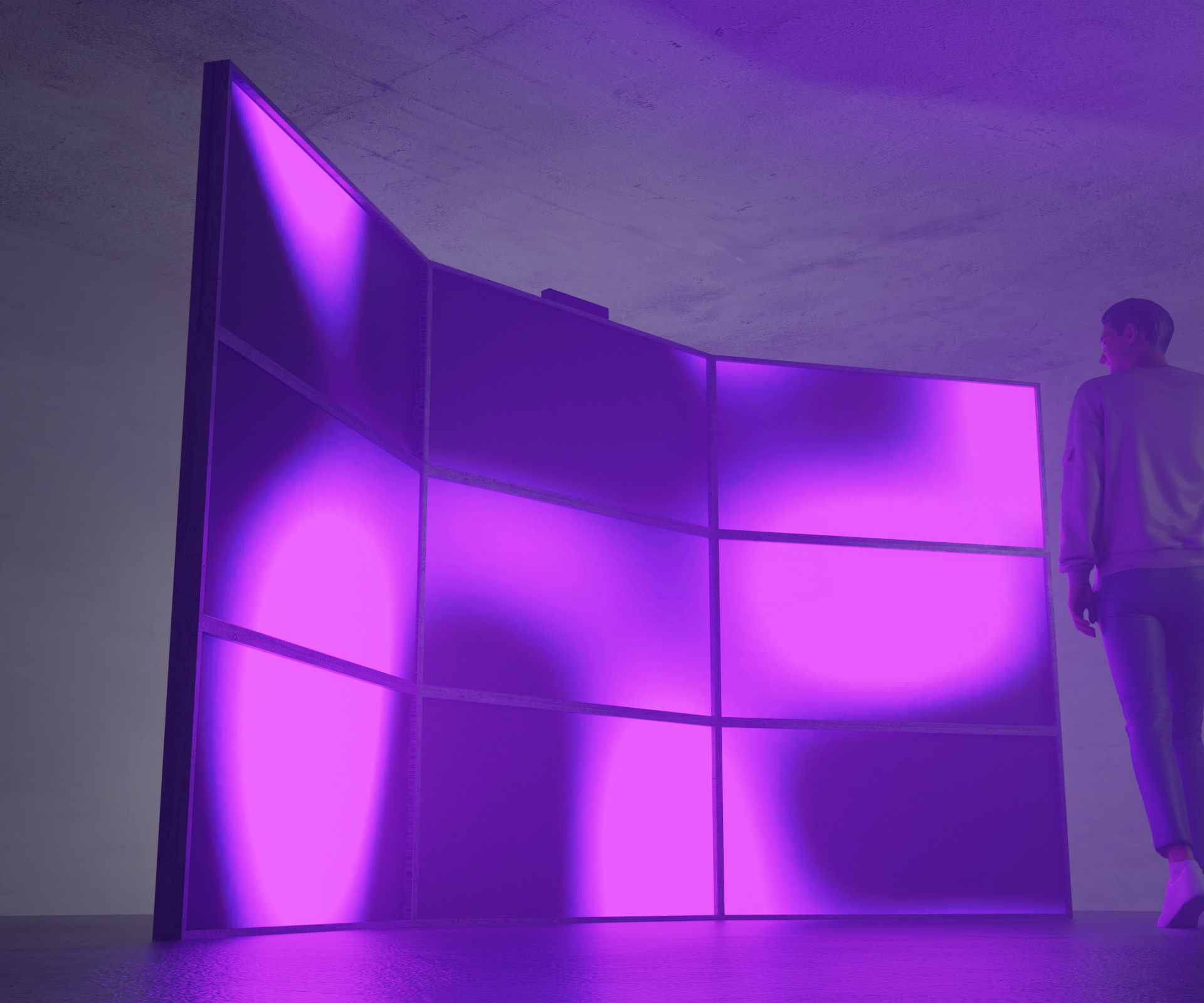

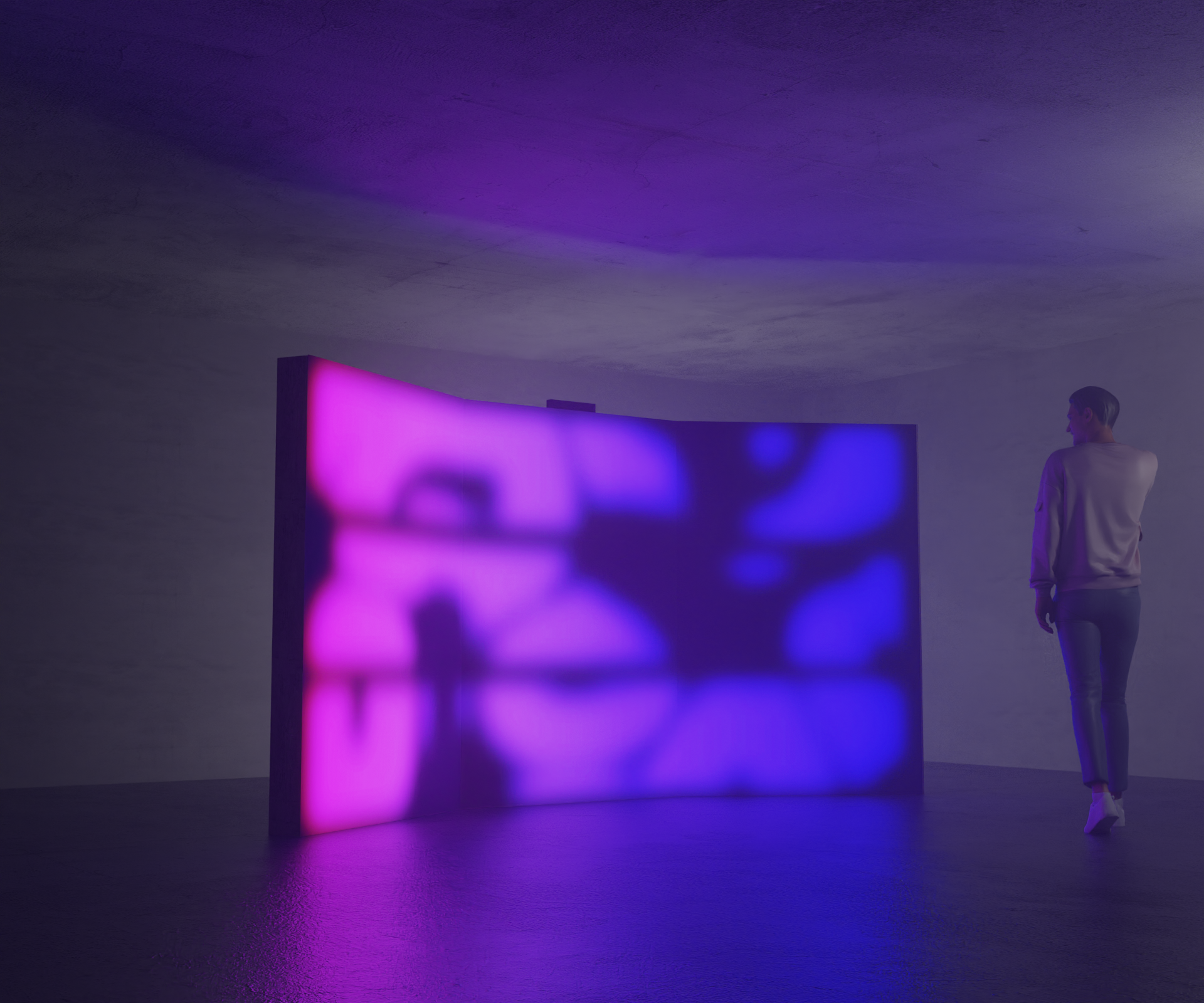

The panels consist of strips of LEDs sitting behind frosted polycarbonate to give the soft gradient amoebus effect. There's something about the abstraction of diffusion that is really interesting to me. It removes the idea that we are looking at a few small LED lights and almost convinces you that there is something alive in that space in the structure. Something I also enjoyed about this without intending it was that when the LEDs switch off in one of the space that entire block switches off and it's kind of like as soon as there's no life there the entire environment dies and I think that's very emblematic of how ecosystems function as well.



Below are some early tests looking at how visuals can be influenced by the Kinect body tracking just using TV visuals and TouchDesigner. Participants are represented by small orb-like organisms and their movement influence the organism’s size and activity.

In trying to figure out what encourages a user's participation and how it relates to my research I eventually came up with this model of the User as Organism, Installation as Ecosystem:
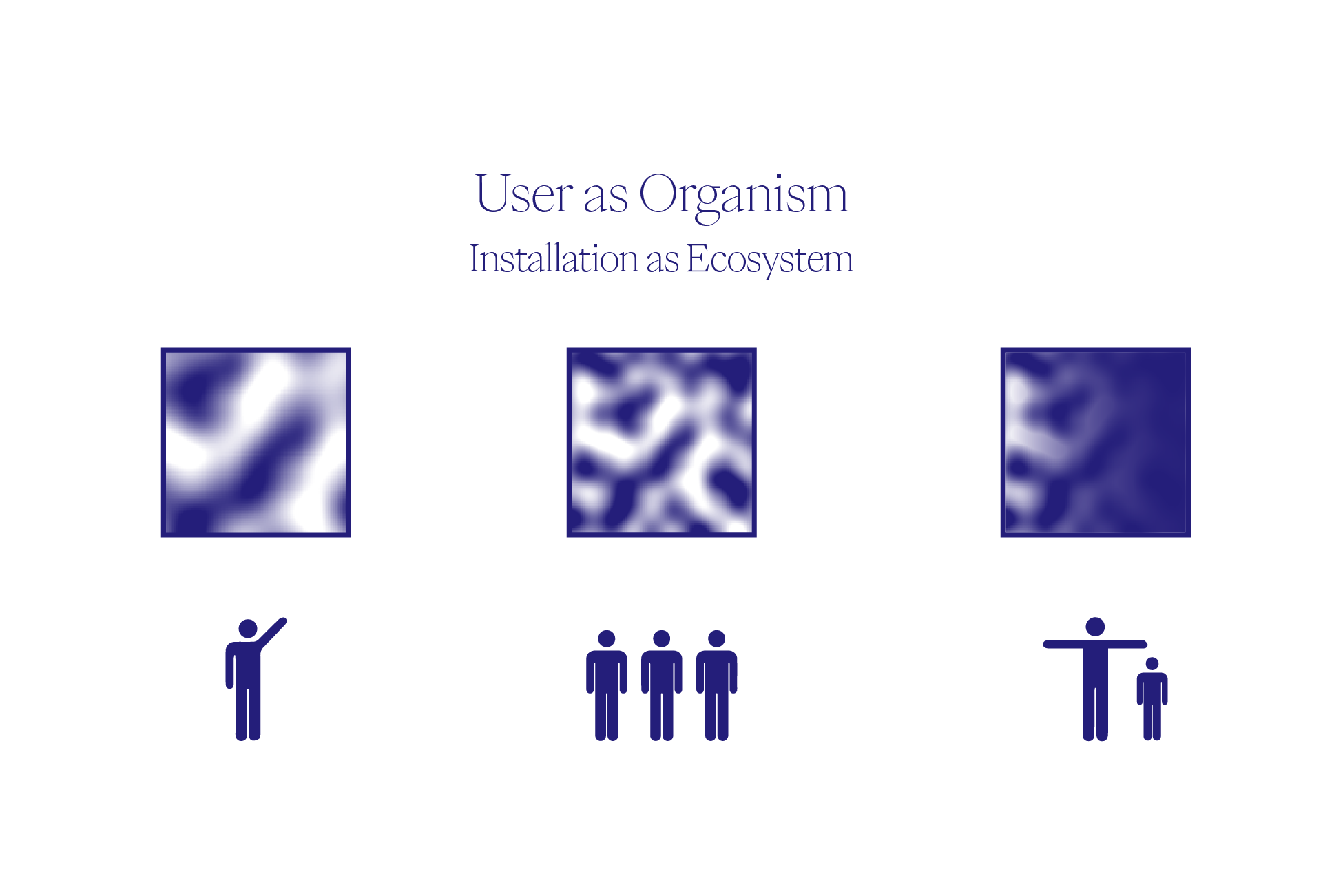
The first degree is basic feedback: any movement and the visuals will move in response to that, such as walking back and forth. That's the first way you can hook someone into moving in the space or ‘feel invited’ to participate without giving direct instructions. The second degree is when more ‘organisms’ (more people) enter the space. This results in a slightly more panned out view and more ‘culturally active’ space – the organisms start shaking and vibrating more. The third degree is what I call the derivative of movement and this measures the acceleration of their arms’ movement. This response is not just if you're moving but how you're moving if you're moving fast. If you're taking up more space or being more present that will result in your visuals on the LEDs being more dominant than the other participants visuals, for example during the Spring Show had users wave their arms but if the second user spread their arms as wide as possible it would totally change the colour to a teal colour. Another feature I included was that if four or more people in the space all provide enough energy, the LEDs will flood red, as if an ecosystem is being depleted of its resources by being overstimulated.
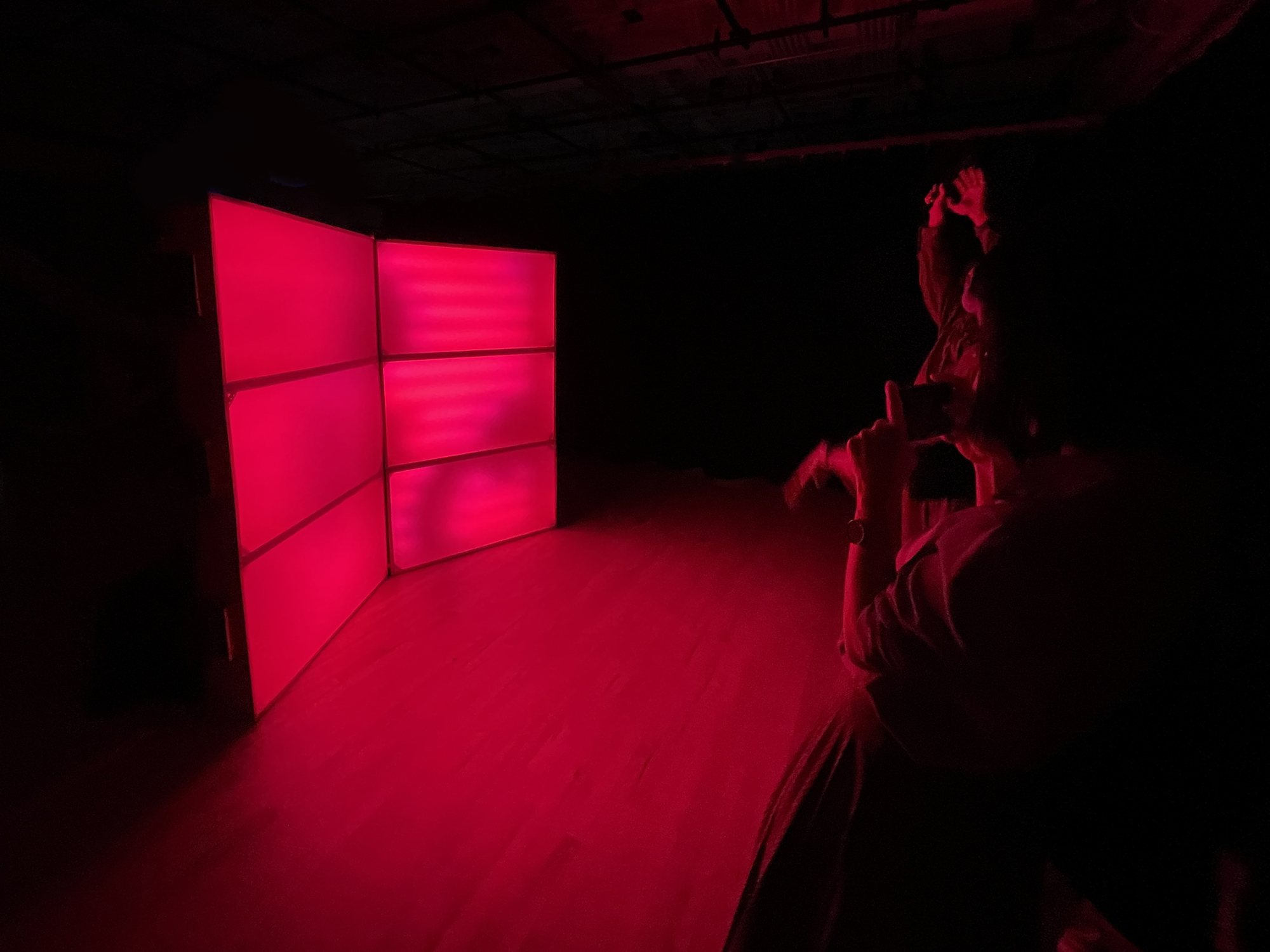
Cui Bono finally aims to encourage viewers to redefine how they operate in the world, what space they take up, and how they influence those around them. Are we actively choosing dominion is our cultural footprint perhaps larger than intended or can we choose to live in a symbiotic equilibrium?
That's up to you.



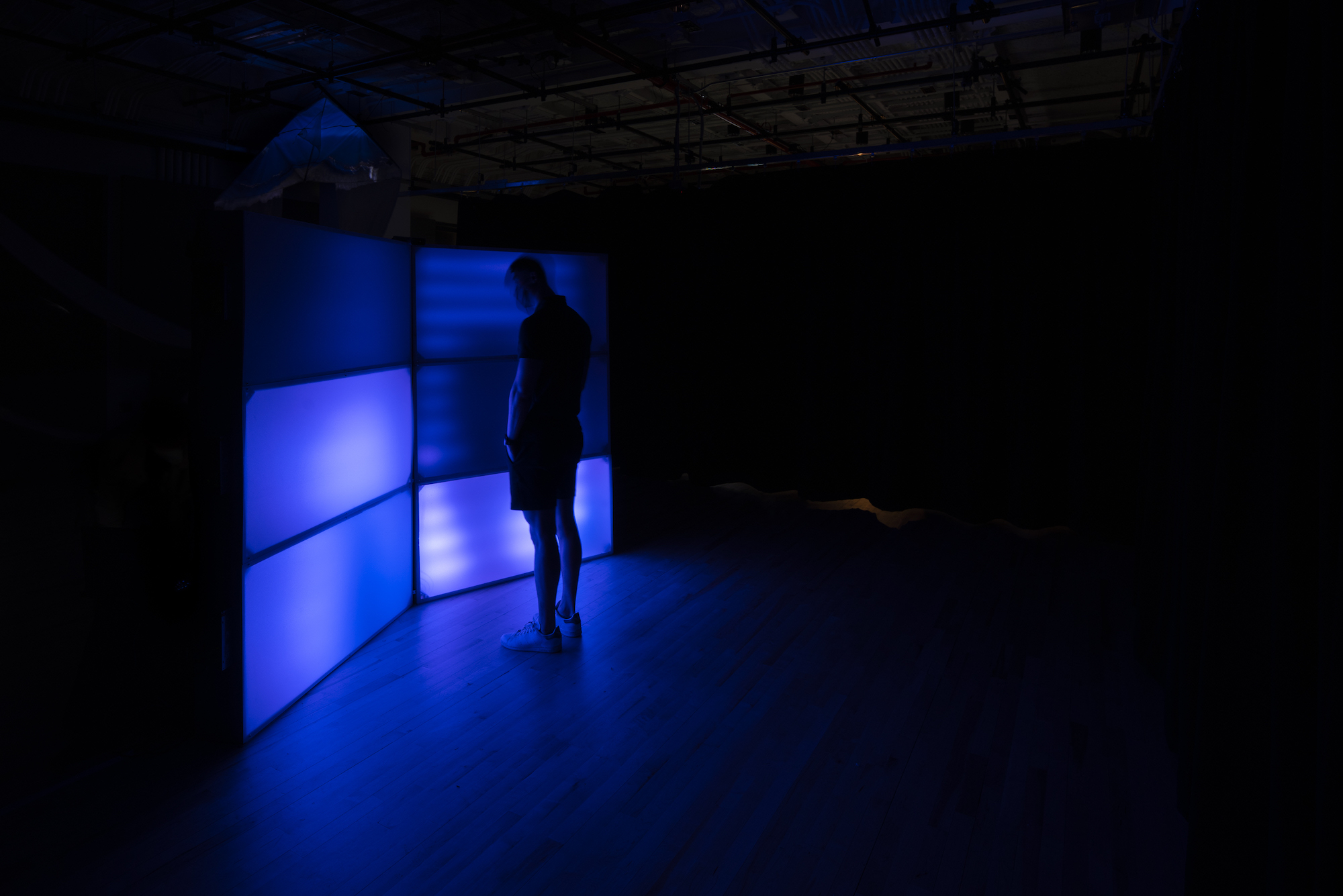


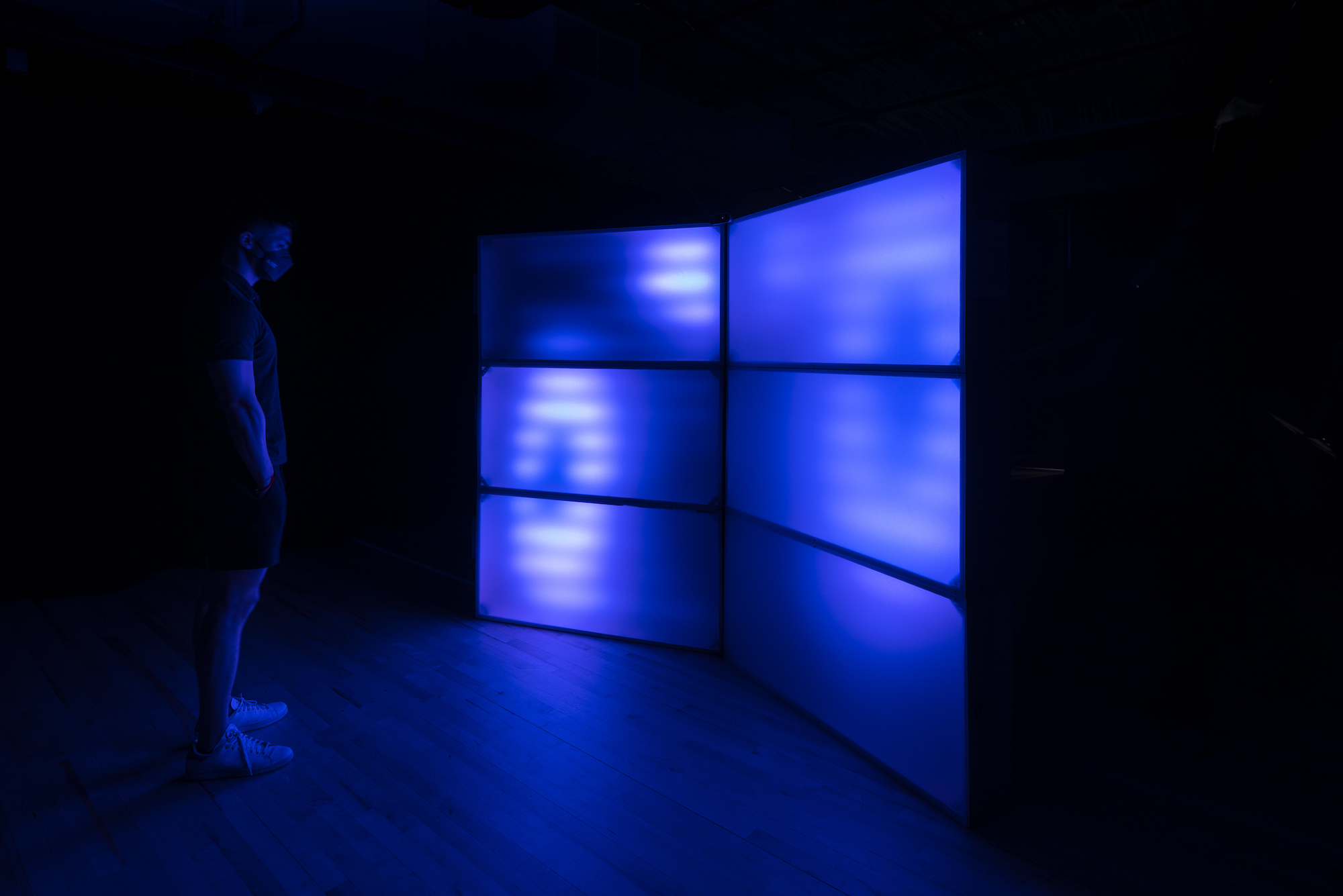
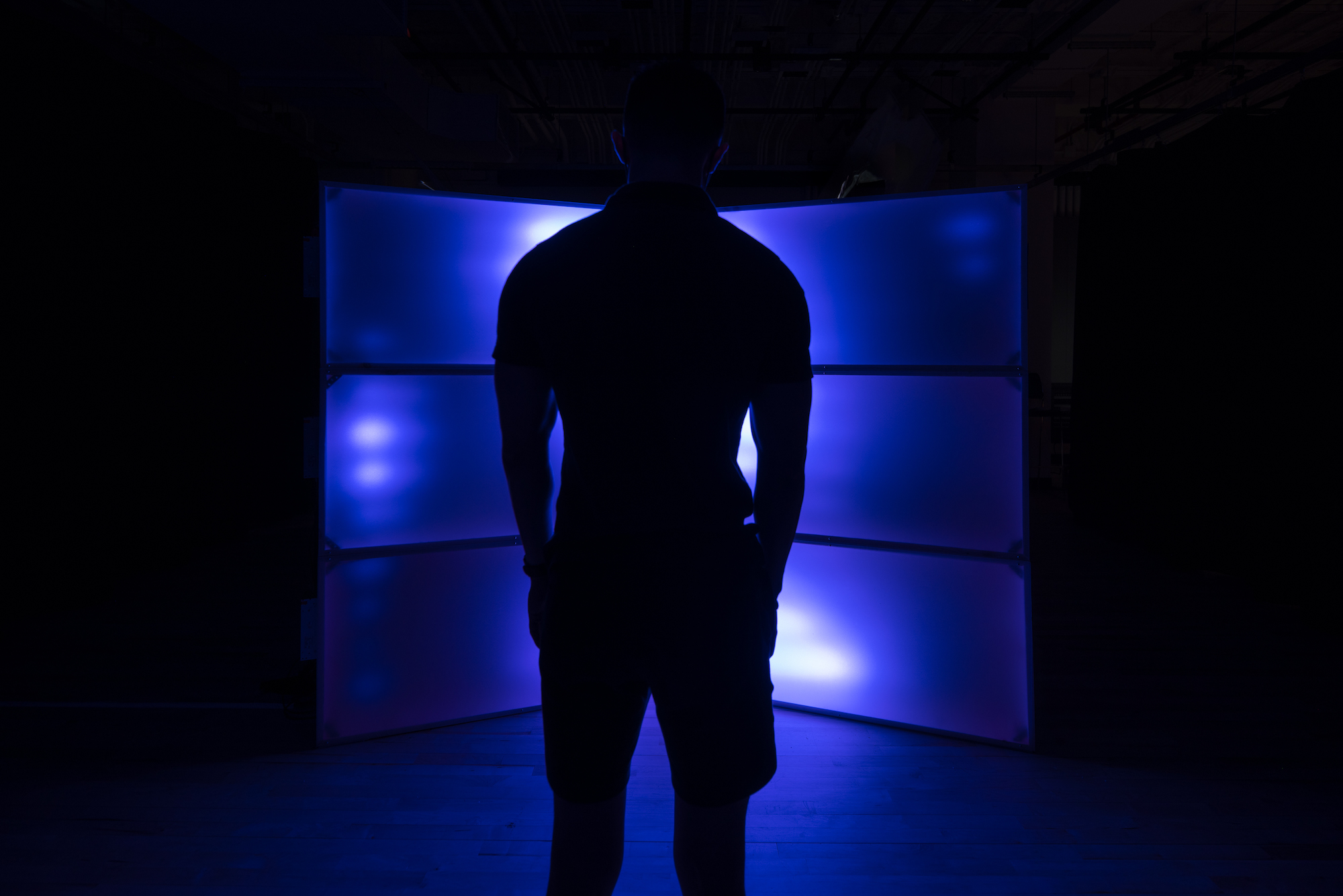
For the full recording of my presentation at ITP Thesis Week (skip to 1min 20sec)